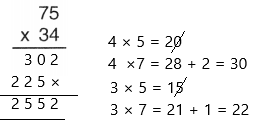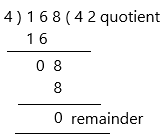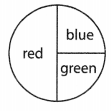By accessing our 180 Days of Math for Fifth Grade Answers Key Day 167 regularly, students can get better problem-solving skills.
180 Days of Math for Fifth Grade Answers Key Day 167
Directions: Solve each problem.
Question 1.
13 + 27 + 14 = ___________
Answer:
The addition is the term used to describe adding two or more numbers together. The addition is denoted using the plus sign ‘+‘ such as the addition of 3 and 3 can be written as 4 + 4. Also, the plus sign (+) can be used as many times as required, such as
4 + 4 + 4 + 4.

13, 27, 14 are the addends.
+ is an operation symbol.
= is an equality symbol.
54 is the total/sum.
Therefore, the answer is 54
Question 2.

Answer:
In mathematics, multiplication is a method of finding the product of two or more numbers. It is one of the basic arithmetic operations, that we use in everyday life. The major application we can see in multiplication tables.
In arithmetic, the multiplication of two numbers represents the repeated addition of one number with respect to another. These numbers can be whole numbers, natural numbers, integers, fractions, etc. If m is multiplied by n, then it means either m is added to itself ‘n’ number of times or vice versa.
The formula for multiplication:
The multiplication formula is given by:
Multiplier × Multiplicand = Product
– The multiplicand is the total number of objects in each group
– A multiplier is the number of equal groups
– Product is the result of multiplication of multiplier and multiplicand

therefore, the answer is 2552.
Question 3.
Is 168 evenly divisible by 4?
Answer:
Yes, 168 is evenly divisible by 4.
The basic rule for divisibility by 4 is that if the number formed by the last two digits in a number is divisible by 4, the original number is divisible by 4; this is because 100 is divisible by 4 and so adding hundreds, thousands, etc. is simply adding another number that is divisible by 4. If any number ends in a two-digit number that you know is divisible by 4 (e.g. 24, 04, 08, etc.), then the whole number will be divisible by 4 regardless of what is before the last two digits.

Question 4.
Write the numeral for six hundred thousand four.
Answer: 600004
Numbers in words are written using the English alphabet. Numbers can be expressed both in words and figures. For example, 100,000 in words is written as One Lakh or One hundred thousand. Numbers in words can be written for all the natural numbers, based on the place value of digits, such as ones, tens, hundreds, thousands, and so on.

Question 5.
Write 35% as a decimal.
Answer:
Per cent implies ” for every hundred ”
We can write 35% as 35/100
In order to convert per cent to a decimal number, the percentage should be divided by 100:
35/100 = 0.35
Therefore, 35% in decimal form is 0.35
Question 6.
(20 + 20 + 20) – 12 ÷ 3 = ___________
Answer:
20 + 20 + 20=60
12 ÷ 3 = 4

Now subtract both the numbers we got. And the answer be X
X = 60 – 4
X = 56
Therefore, the value of the above-given expression is 56.
Question 7.
67 – n = 25
n = ___________
Answer:
67 – n = 25
take 67 on to the right-hand side then the expression becomes:
– n = 25 – 67
– n = – 42
‘-‘ gets cancelled on both sides.
Therefore, n = 42
Now submit the n value in the above expression.
67 – 42 = 25
25 = 25
Both sides are equal, hence answer is verified.
Question 8.
Calculate the perimeter of a hexagon with 4 cm sides.
Answer:
A hexagon is said to be a polygon that has six sides and six angles. If all the six sides are equal, then it is called a regular hexagon. Naturally, the perimeter of the regular hexagon will be 6 multiplied by one side of the hexagon. Each internal angle of the hexagon is 120 degrees.
The formula for the perimeter of a hexagon:
p=6 × a,
Where a is the length of the side.
p=6 × 4
p=24 cm.
Therefore, the perimeter of a hexagon with 4 cm sides is 24 cms.
Question 9.
Can a cross-section of a cube be a circle?
Answer: No
Cross-section means the representation of the intersection of an object by a plane along its axis. A cross-section is a shape that is yielded from a solid (eg. cone, cylinder, sphere) when cut by a plane.
The cross-section of a cube is a square. Since a cube has its faces shaped in squares and all the edges of the cube are equal in length. Therefore, when we cut the cube by a plane, we get a square shape.
Question 10.
True or false?
When reading a coordinate grid, it is correct to give the vertical (side) coordinate before the horizontal (bottom) coordinate on a grid.
Answer: True
The X-axis and Y-axis of a coordinate system are always the same lengths.
The horizontal axis in the coordinate plane is called the X-axis. The vertical axis is called the Y-axis. The point at which the two axes intersect is called the origin. The origin is at 0 on the X-axis and 0 on the Y-axis.
Question 11.
Using the spinner below, what is the probability you will not land on red?

Answer:
Probability can be defined as the ratio of the number of favourable outcomes to the total number of outcomes of an event. For an experiment having ‘n’ number of outcomes, the number of favourable outcomes can be denoted by x. The formula to calculate the probability of an event is as follows.
Probability(Event) = Favorable Outcomes/Total Outcomes = x/n
If we assume total spin is 100%.
The spinner is divided into 3 sections.
The red colour is 50%
The blue colour is 25%
the green colour is 25%
P(A)=50/100=0.5
P(A)=0.5
If you know the probability of an event occurring, it is easy to compute the probability that the event does not occur. If P(A) is the probability of Event A, then 1 – P(A) is the probability that the event does not occur.
P(not land on red)=1-0.5
P(not land on red)=0.5
Question 12.
A watermelon was cut into 20 equal pieces. How many pieces of watermelon are there in a quarter of the watermelon?
Answer: 5 pieces.
quarter means 1/4th of total.
The number of pieces a watermelon was cutted=20
The number of pieces of watermelon is there in a quarter of the watermelon = X
X = 1/4 * 20
X = 5 pieces.
Therefore, 5 pieces will be there in a quarter of the watermelon.